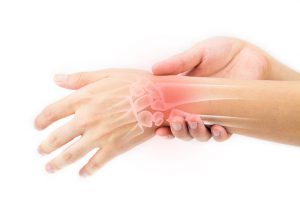 Many seniors suffer from joint pain. From achy knees to cracking elbows, joint pain can damper your ability to perform day-to-day tasks.
Many seniors suffer from joint pain. From achy knees to cracking elbows, joint pain can damper your ability to perform day-to-day tasks.
People will simply take an over-the-counter anti-inflammatory drug for their joint pain. Although this offers temporary relief, it doesn’t fix the cause of the problem.
Advertisement
There are numerous reasons for joint pain, including aging and lack of physical activity. And for some, it is the result of a more serious medical condition.
Below you will uncover some of the more serious causes of joint pain so that you can finally get to the root of your pain, rather than temporarily fixing the issue.
8 causes of joint pain
Osteoarthritis
Osteoarthritis is the most common cause of joint pain, and it affects 27 million Americans. It is commonly described as wear-and-tear arthritis due to the deterioration of cartilage in between the joints.
As the joints move, the cartilage becomes thinner and thinner over time, which will eventually lead to the bones rubbing together. Once the cartilage is gone, it cannot come back, so patients need to be careful not to promote further deterioration.
Psoriatic arthritis
This type of arthritis affects patients with psoriasis, a chronic skin condition. Psoriatic arthritis is an autoimmune disease that occurs when the immune system mistakenly attacks the joints, causing joint pain, swelling, stiffness, and inflammation.
The pain is most severe during the waking hours. And because it is a chronic condition, the sufferer will have it for life but can manage it with medications.
Rheumatoid arthritis
Rheumatoid arthritis is another autoimmune disease that triggers joint pain. It usually affects the smaller joints like those in the hands, resulting in inflammation, stiffness, and swelling.
Over time, rheumatoid arthritis can affect not only the joints, but also the lungs and blood vessels. And, it can also increase a person’s risk for heart disease.
Lupus
Lupus is an autoimmune disease, and nearly 80 percent of patients report joint pain as their first symptoms. It tends to affect the extremities such as the knees, ankles, toes, fingers, and wrists.
Similar to psoriatic arthritis and rheumatoid arthritis, pain is worse in the morning and may ease throughout the day.
Gout
Gout is a very painful form of arthritis usually affecting the large joint of your big toe. For some, the pain is so sudden and severe that it wakes them up during the night. Furthermore, patients have difficulty walking when a gout flare-up occurs.
This type of arthritis is the result of a buildup of uric acid, which occurs as a byproduct of purines found in foods like red meat and organ meat. So, switching up your diet can help keep flare-ups at bay.
Lyme disease
The risk of getting Lyme disease is particularly higher during the warmer months as we are more likely to venture out into the woods for camping or hikes, where deer ticks can transmit the disease.
Along with a rash that appears like a bull’s eye, Lyme disease can contribute to joint pain commonly affecting one or two joints. It is treatable if caught early, so if you suspect that you have been bitten by a tick, see your doctor right away.
Hypothyroidism
Hypothyroidism is when the thyroid is underactive, meaning it does not produce enough hormones. It most commonly affects women over the age of 50 and can cause carpal tunnel syndrome, swelling, joint pain, and stiffness.
Effectively treating hypothyroidism can help relieve joint pain.
Fibromyalgia
Not much is known about fibromyalgia, but patients experience all-day pain and discomfort like muscle pain and fatigue. It affects roughly 3.7 million Americans, and women are more likely to develop this condition, particularly those who are overweight.
Advertisement
Unfortunately, there are no FDA-approved treatments or cures for fibromyalgia at the moment. Patients must work alongside their doctors to develop some form of treatment plan to obtain relief.
Uncovering your specific cause of joint pain can help you narrow in on an effective treatment method rather than overdoing it on over-the-counter pain medications.
Related: 5 easy ways to relieve your joint pain
